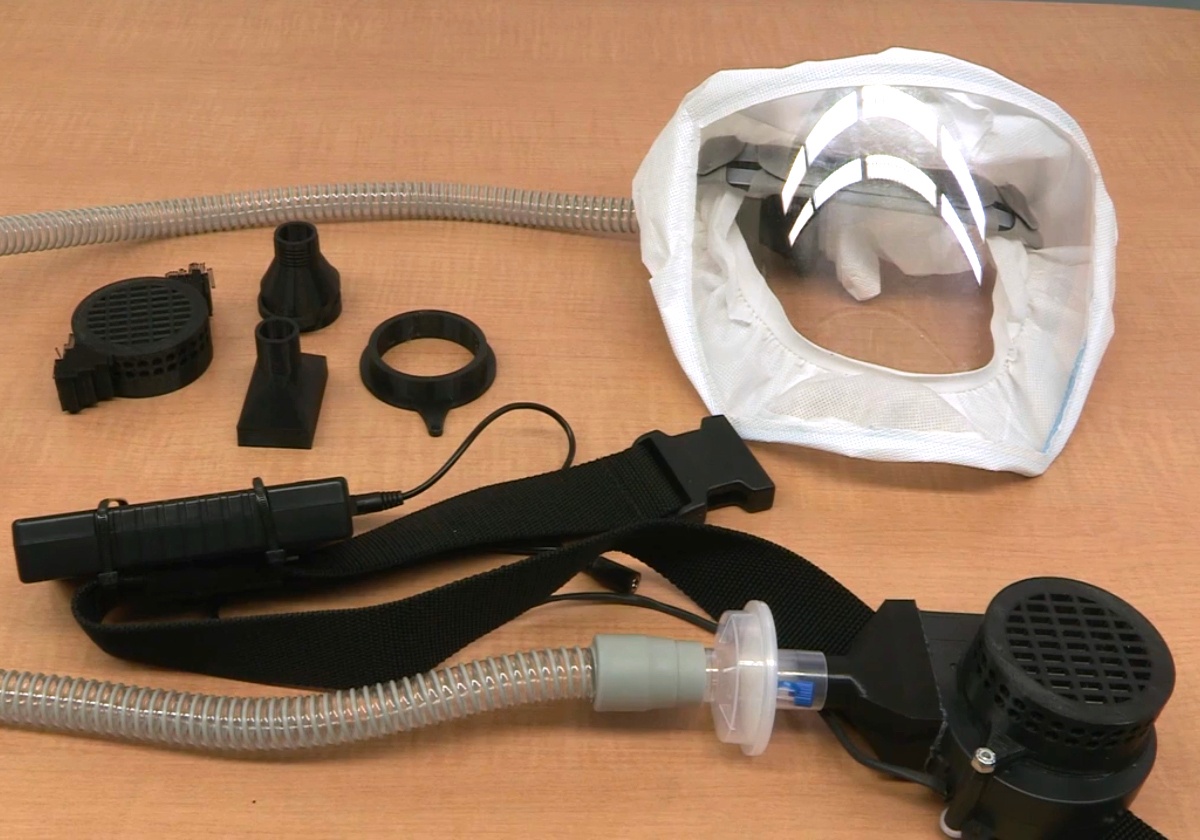
How can the Power Air Purifying Respirator designed by the University of Utah help against COVID-19?
The CMI of the University of Utah has designed a new system of reusable purifying respirator for healthcare workers and caregivers who take care of COVID-19 patients. This Power Air Purifying Respirator (PAPR) is safe and reusable in response to the overwhelming demand for PPE.
Studied and designed by the Center for Medical Innovation (CMI) of the University of Utah to provide a constant flow of clean air through a filtered helmet to the healthcare workers and caregivers. This Power Air Purifying Respirator maintain a positive pressure which prevents the entry of unfiltered air and protects the operator from any kind of infection, like COVID-19.
The University of Utah and COVID-19: how could a reusable PPE make the difference into hospitals?
As we know, each hospital has the possibility to store a limited quantity of the systems on-hand at any given time. As Bryan McRae, interim co-director at CMI explained in the official communication on the University of Utah website, “PAPR systems provide excellent protection and can drastically reduce the consumption of single-use PPE, such as common N95 respirators. Unfortunately, PAPRs have now been unavailable for standard suppliers for more than a month. The CMI team and our University of Utah Health colleagues have been nimble and innovative in developing a solution to bridge the gap while traditional PPE sources remain uncertain.”
As according to the standardized rating system known as “Fit Factor” and the Power Air Purifying Respirator systems typically rate is somewhere between 200 and 1000 on the quantitative fit testing scale, the system reduces the concentration of 0.3 micron aerosolized particles inside the system by 200 to 1000 times when compared to the air outside the hood.
The CMI let the Power Air Purifying Respirator system assessed by the Rocky Mountain Center for Occupational and Environmental Health of the University of Utah and offers a Fit Factor of 400 or better. According to the scale of the OSHA, known as Assigned Protection Factor (APF), reported that this Power Air Purifying Respirator gives an APF between 25 e 400.
Compared to the common N95 respirator masks which typically only provide an APF of 10, it is evident that this the Power Air Purifying Respirator system is more efficient.
The feedback of the healthcare workers about COVID-19 Power Air Purifying Respirator system designed by the University of Utah
The CMI integrated the feedback from the healthcare workers and caregivers before producing the Power Air Purifying Respirator in large numbers. Thanks to the customized 3-D printed adapter used to connect the respirator to the helmet, “CMI’s PAPR system can also connect to older models of PAPR helmets still in-stock, enabling hundreds of previously unusable helmets to be worn safely and comfortably by health care workers at University Hospital”, the Julie Kiefer, .
“We are especially grateful for the expertise and insight from our university and industry partners. As we further develop solutions for health workers during the COVID-19 outbreak, we will continue to rely on our community partners to help us implement these projects”, said Bernhard Fassl, interim co-director of CMI.
HERE to discover more about this project
OTHER RELATED ARTICLES
COVID-19, University of Oregon: 1 million for students with serious financial disruptions
Plasma Therapy and COVID-19, the John Hopkins University hospitals’ guideline
Coronavirus face masks, should general public members wear them in South Africa?



